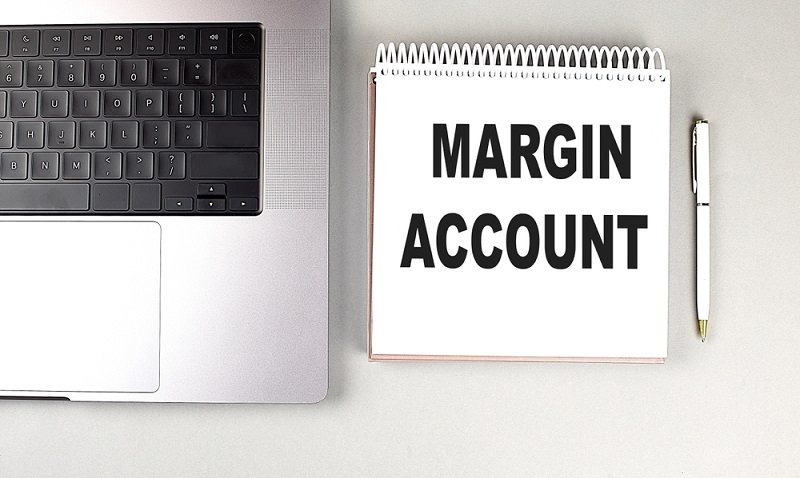
Stock market trading can be thrilling, particularly if you are sure of what you are investing in. However, at other times, a little more buying power can enable you to make full use of good opportunities. Here is where a margin account comes in. Whether you have been trading for quite a long time or have just begun to trade, you might want to know how margin accounts work and why they are helpful. So, in layman's terms, let's simplify it all and consider the reasons why opening a margin trading account could be considered a smart decision on your part.
A margin account is a special kind of brokerage account where you borrow funds against securities held with your broker so that you can purchase securities beyond what you could afford with personal cash alone.
That is as though it is a loan to invest more. Yet you do not go to the bank to borrow its money, you borrow from the brokerage through whose account you have the money and investments.
You can take out a margin account with your broker, which allows you to borrow on credit to buy more. As an illustration, you might deposit one and get two thousand dollars that can be used to purchase some stocks. An additional sum of 1,000 dollars is obtained through your broker.
The interest is charged against what you borrow and not your total invested capital. This is to say that it is possible to make more profits in case there is an increase in the value of your investment. However, do not forget that a greater loss is also possible in case of a downward movement in prices.
In the case of a cash account, there is no possibility of trading something that you do not have. A margin account is where you are indebted and can trade beyond your money. Margin accounts have higher risk yet are more flexible and have more growth potential.

The reason why many traders open a margin account is that it provides them with more flexibility as well as greater power to exploit the opportunities associated with the movements of the markets. Here are some of the main benefits.
The highest benefit of a margin trading account is that you have increased buying power. This implies that you would purchase additional stocks or bigger positions than the cash allows. Just as an example, let us assume you see a good deal on a stock and you just fall short of the funds with a margin account, you can take advantage of the opportunity without having to wait to have more cash on hand.
Since you are putting more in, the returns will also be bigger- as long as your trade takes the appropriate direction. Consider the example of a profit of 500 dollars on an investment of 2000 dollars rather than 1000 dollars; you will get higher earnings, which is natural. This is part of the reasons why skilled traders are likely to use margin accounts.
With a margin account, your trades settle faster. This means you can quickly reinvest your funds without waiting for the usual 2-day settlement period. This can be helpful for active traders who don’t want to miss out on opportunities.
While the benefits are clear, margin trading also comes with risks. It’s important to understand them before opening an account.
Borrowing money increases both your potential gains and your potential losses. If your investment drops, you not only lose your own money but also owe your broker for the borrowed amount.
For example, if you buy $2,000 worth of stock with $1,000 of your own money and $1,000 borrowed, and the stock falls by 50%, you’re left with just $1,000—but still owe the broker $1,000.
Since you’re borrowing money, your broker charges interest. These charges can eat into your profits if you hold your positions for too long. It's important to factor in interest costs when making your trading plan.
Also read: Evaluating Growth vs Value Stocks: A Strategic Investment
If you’re ready to start, opening a margin account is quite simple. Most online brokers allow you to open one easily, often alongside a regular trading account.
Start by selecting a reliable brokerage firm that offers margin accounts. Look for low interest rates, good customer service, and user-friendly trading platforms.
When you open your account, you’ll usually need to fill out a separate form for margin trading. This may include questions about your income, experience, and trading goals. Brokers need this information to assess your ability to manage risk.
Before you sign anything, read the margin agreement carefully. Make sure you understand the terms, including interest rates, margin requirements, and what happens if you get a margin call.
You’ll need to deposit money into your new margin account. Some brokers have minimum balance requirements—often $2,000 to activate margin trading.
Once your account is approved and funded, you can start trading on margin. Keep an eye on your account balance, borrowed amount, and maintenance margin to avoid surprises.
Let’s look at an example to understand how a margin account works in real life.
You deposit $5,000 in your margin account. Your broker offers 2:1 leverage, meaning you can borrow another $5,000. You now have $10,000 in buying power. You buy 100 shares of a $100 stock. If the price rises to $120, your investment is now worth $12,000.
Profit = $12,000 - $10,000 = $2,000 (minus interest)
In this case, your return is 40% on your initial $5,000 investment—much higher than if you had only used your own money.
A margin account may also be an effective tool for traders who are interested in expanding their purchasing power or seizing an opportunity in the market, or who wish to use the short-selling strategy. However, it is necessary to realize the risks one takes and act reasonably to cope with them. In case you are asking how to open a margin account, well, it is as easy as it sounds: read all the terms and conditions, be patient, and start small. Margin trading accounts might present new opportunities to your trading experience with intelligent strategies and well-calculated actions.
This content was created by AI